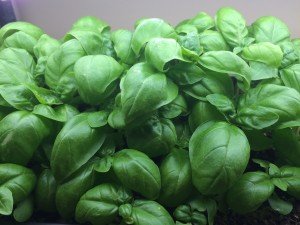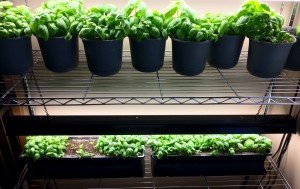This year, in particular, is full of new beginnings. I welcomed the New Year in with a toast and a cheer from my home in Apex, NC. Just a few months later, this native midwesterner calls Long Island, NY home.
The question I was asked most often about the move was, "Are you going to take your garden with you to New York?". I had 11 individual 4'x4' beds for annuals that constituted the main garden. Separately I had 3 individual 4'x4' beds that were permaculture consisting of asparagus in one, strawberries in another and herb garden in the third. The family that is buying my house in a few weeks will inherit these three boxes. The other 11 beds are disassembled and stored in the basement of the house I am renting for a bit.
The second most common question was, "Will you be able to grow anything in the cold up there?". This question was a curious one to me. I had check the Hardiness Zone Map and both Apex and most of Long Island are Zone 7b, but no one could believe that Long Island and Raleigh are roughly the same growing climate. Despite the incredulity of the south, I should be able to grow roughly the same varieties and seasons in NY as I did in NC.
For the first year while I rent, my growing will be restricted to hydroponics and containers. I am looking forward to a year from now, buying some asparagus crowns and a backyard to put them in!
Read MoreAutumn has arrived in North Carolina, bringing with it the final harvest of bell peppers, roma tomatoes and serrano peppers.The herb garden has brushed off the first few light freezes and stands ready to make meals fragrant and savory for months to come. I am confident that the thyme, oregano and sage will over winter well and hope that the french tarragon and parsley will also.Parsley is such a staple of fall and winter dishes that I have more growing on my deck. I have been poaching from the deck parsley for a few weeks thinking that it would not handle the frosts as well, but so far it is also doing wonderfully.In previous years I have repeatedly removed pine needles from the garden beds only to replace it with a different mulch. This year I have come to my senses and am embracing the pine trees taking care of mulching for me.Collards, carrots, cabbage and parsnips are tucked into their naturally (and effortlessly) mulched beds.The fall planting of sugar snap peas has been supplying tender pea shoots and now has peas forming as well.The hydroponic herbs were changed over 10 days ago to the varieties I know and love to cook with and are already doing quite well. I am growing 2 plantings each of my favorite basils and cilantros, 3 of the flat leaf parsley and just for fun I am trying to grow 2 red kales hydroponically.With the Super Bowl and attendant tomato starts almost 2 months away, this cozy, fall garden that is mostly taking care of itself feels like a recess.
Read MoreDay 46 of the prepackaged herb pack that came with my AeroBount and I have excellent basil growth, both genovese and thai. The mint was just starting to grow and the cilantro, parsley and chives never really took off. The genovese basil, while in the same family, is not the basil I usually grow. I do not know if it is a function of the variety or of the hydroponics but it bruises extremely easy and blackens quickly on warm dishes.My Baker Creek order came in last week with seeds for my hydroponic herbs and counter top microgreens so I decided to ditch the prepackaged herbs and start my own this weekend.My aero garden has space for 9 pods so I planted 2 of each except for the parsley that I planted 3 pods of because fall stews + parsley = YUM!
Read MoreA quick update on the AeroGarden:Day 18, I topped off the water a couple of days ago when it was time to the second application of nutrients.The basils are doing great and the mint is beginning to peek out...otherwise, not much happening in the other 5 starter sponges. I have some replacement starter sponges I purchased with the garden as well as some fresh herb seeds on their way from Baker Creek. I think a replant with new seed will get the empty spots going.
Read MoreLate blight is wrecking havoc on North Carolina tomatoes this year, particularly the heirloom varieties. Last year I was pulling down green tomatoes in late November and this year they were pretty much done by late August. C'est la vie.Luckily, there are some good things happening in the kitchen while I wait for the fall lettuce and spinach to fill in the garden. I have been working with my pasta maker, trying different shapers and getting the hang of the process. This week I wanted to try adding some fresh basil into the mix so I chopped it very finely and tossed 1 gram of it with the Anson Mills pasta flour before adding it to the maker using the angel hair shaper.The result was very pretty and did have a hint of basil taste. I was concerned that the basil would interfere with extruding and/or the pasta's ability to hold together when cooking, it did neither.I want to try the experiment again with a little more basil which means I should probably use the spaghetti shaper to be safe. I had already started the sauce when I decided to try adding basil to the pasta but next time I would like to try it with a simple butter garlic sauce that won't overpower the flavor of the pasta like the thick, homemade tomato sauce in the photo above.I am also wondering if I can do the same thing with finely chopped, fresh spinach and a thicker noodle.With fall/soup season just around the corner I have also ordered some kansui, the alkaline ingredient that gives ramen noodles their distinctive texture and the ability to hold up well in soups.I am beginning to suspect that the folks that sell fresh pasta and noodles at the Farmer's Market aren't doing it to make money, they just want an excuse to make more than they can personally eat...
Read MoreRecently I wanted to find some great make-ahead recipes that I could prepare in batches and freeze for fast and easy, but still homemade meals that I would feel good about on those "I don't feel like scratch cooking" nights. Stuffed pastas kept catching my eye as something highly versatile (options including but definitely not limited to: cheese, spinach, squash, beef, tuna with a bechamel sauce) and are super easy to freeze and reheat.I already had a great homemade pasta dough recipe (for use with the KitchenAid stand mixer and pasta roller attachment) and ravioli filling recipe but wanted to do some research and see if some varieties freeze better than others.While doing searches for freezing homemade stuffed pastas my results kept turning up all these recipes and ads for pasta maker machines...hmm. A few dozen YouTube videos and Amazon.com reviews later, I decided a pasta maker was just what I needed both to make fast and easy ravioli for my make-ahead meals as well as ditching the boxed, dried stuff in my pantry for fresh, on-demand pasta made with high quality wheat*.I found the pasta maker I wanted on sale at Williams-Sonoma - the Philips Smart Pasta Maker. I liked this one in particular because in addition to the weighing function which helps you fine-tune your liquids if you are using more or less than a perfect single or double batch of pasta flour, it comes with 8 shaping discs meaning no accessories to purchase later.I had to try it right away after it arrived so I made a simple angel hair pasta to get a feel for the machine and process.The adverts say that you will have fresh pasta in 15 minutes, I am pretty sure they mean when the last of the noodles come out because this machine begins extruding pasta in just 3 minutes!I made a double batch which was double the amount I needed. The other 1/2 can be dusted with flour and refrigerated for a few days or frozen for a longer storage time.The pasta was fantastic - delicious and with great bite, perfect al dente!* A note on the pasta flour I use - as much as possible, I buy my grains from Anson Mills. I could do a whole series of posts on Anson Mills and founder Glenn Roberts and how they are reviving lost tastes through heirloom grains. If you haven't read it yet, a great way to get to know Glenn is through Dan Barber's seminal book The Third Plate. I became an instant convert based on what I knew about Glenn's grains. Tasting them only further cemented my ardor.
Read More





